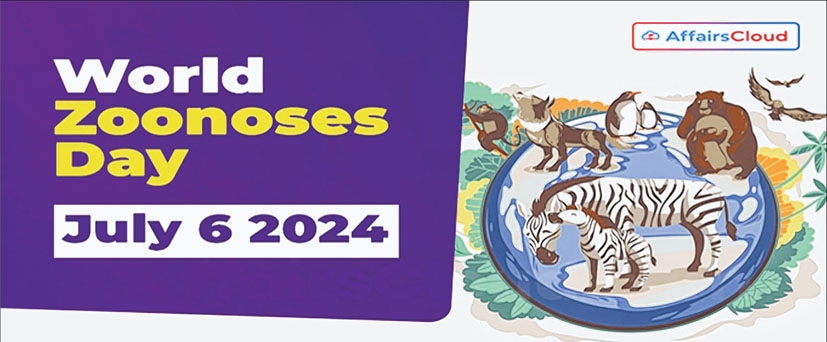World Zoonoses Day
|

Dr Thiyam Ramesh Singh (MVSc Scholar)
Everyone understands that the world has evolved in terms of people's living standards, but the challenges are far from done; more and more issues are emerging. One of the primary issues is sickness. Disease transmission is always possible since humans and animals coexist. Those diseases and infections which are naturally transmitted between vertebrate animals and man are known as Zoonoses. It is estimated that, globally, about one billion cases of illness and millions of deaths occur every year from zoonoses. Some 60% of emerging infectious diseases that are reported globally are zoonoses. Over 30 new human pathogens have been detected in the last three decades, 75% of which have originated in animals.
The term Zoonosis was coined by Rudolf Virchow. The word is derived from the Greek word, ‘Zoo’ means animal, and ‘noses’ means diseases. Zoonotic pathogens may be bacterial, viral, or parasitic, or may involve unconventional agents and can spread to humans through direct contact or through food, water, or the environment. They represent a major public health problem around the world due to our close relationship with animals in agriculture, as companions, and in the natural environment. Zoonoses can also cause disruptions in the production and trade of animal products for food and other uses.
Every year 6th July is celebrated as World Zoonoses Day to commemorate the historic events,on 6th July, 1885, French biologist Louis Pasteur successfully administered the first rabies vaccine to a little boy Joseph Meister, who was bitten by a rabid dog. The vaccine not only prevented the child from getting rabies; it saved his life. It is celebrated along with a theme for every year. This year, it is celebrating under the theme “Preventing the spread of Zoonotic Diseases”. This will highlight the progress in controlling these diseases and the importance of working together to eliminate them.
Why is this day worth celebrating? It contributes to raising public awareness of zoonotic illnesses, their modes of transmission, and the dangers they present. The first step in prevention and control is awareness. The purpose of the day is to highlight the value of preventive measures like immunizations, good cleanliness, and responsible animal interaction. It motivates people to take preven- tive measures to safeguard their communities and selves. Honoring this day offers a chance to showcase developments in zoonotic disease research, therapies, and vaccinations. Additionally, it promotes responsible behavior, community mobilization, and the develop- ment of a more knowledgeable and watchful society.
This important day can be celebrated by spreading awareness to the people, and educating them about the importance of zoonotic diseases in humans as well as in the economy of the country.Collaborate with local health officials to organize vaccination drives for humans and animals, particularly for diseases like rabies. Promote the importance of routine immuniza- tions for pets and livestock. Hold workshops on safe animal handling techniques, basic cleanliness, and the necessity of reporting sick animals. Organize free or low-cost health exams and veterinary clinics to detect zoonotic diseases in both humans and animals. As a result, by learning about zoonotic illnesses, we may all contribute to their elimination or control. Let us share this wisdom with our loved ones. The writer is with the Dept of Veterinary Public Health and Epidemiology College of Veterinary Sciences and Animal Husbandry, Selesih, Aizawl, Mizoram

